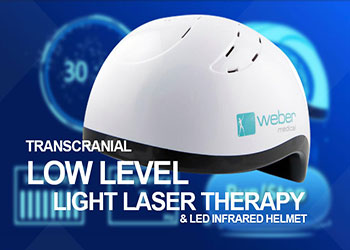

The use of transcranial light has become increasingly popular in recent times for neurodegenerative diseases, Alzheimers and parkinsons disease to name but a few.
It is also a therapy becoming increasingly popular for depression, stroke, and post traumatic brain injuries. Treatment time using the helmet to deliver transcranial light is typically 1-30 minutes. Recommendation : 30 minutes/day is now possible with having your own LED helmet (retailing at 2900Euro)
Frequency from 1Hz to 20,000 Hz
If cost is an issue, at least we can do the transcranial light lasert herapy at our clinic as frequently as required. Easy Handling LED Infrared Helmet comes with a US adapter with simple setup for Transcranial Low-Level Laser Therapy. Transcranial Low-Level Laser Therapy (TLLLT) is the direct irradiation of the human brain with highly focused infrared lasers.
Unlike other wavelengths, infrared light has the ability to penetrate bones and to bring light energy to the targeted brain areas. Light energy is absorbed by different types of cells to trigger a broad range of intra-cellular effects.
The optimum wavelength for max. skull penetration is between 805 nm and 830 nm (infrared). Studies show that the light reaches a depth of 4-5 cm.
LED therapy is non-invasive, painless and non-thermal.

Mechanisms of working :
a) Stimulation of the mitochondrial respiratory chain (cytochrome c oxidase)
b) Release of NO by photodissociation vasodilatory effects
c) Brief increase in reactive oxygen species
d) Improved oxygen availability and oxygen consumption
e) Activation of signaling pathways and transcription factors that cause long-lasting changes in protein expression
f) Increases ATP production
Over and above the mitochondrial effects listed above the transcranial low level laser also :
References : available on request.
Watch Dr. Golding talk on Integrative and Anti-Aging Medicine.
Sign up for our newsletter to find out more about the exciting world of integrative medicine
